Unusual naval projects
In the middle of the last century, naval sailors of the Soviet Union ordered a special ship - an underwater minelayer mine support. The project was commissioned to work at TsKB-18, and in 1956, work began on the design of an underwater mine layer.

Due to the heavy load of TsKB-18 on the design of missile submarines, the design of the submarine ship, readiness of about 40 percent, is transferred to the team of TsKB-16.
Based on the requirements of the project, the submarine had to have a diesel engine and accommodate special weapons of the 90 order "PLT-6", specially designed for submarines, also had to be able to quickly convert the minelayer to a transport submarine for transporting people and transporting oil and fuel and water. Storage of special weapons was carried out on a revolutionary technology, the location of mines between compartments.
By the end of 1958, the project of the submarine “632” was adopted by the State Commission, but the project did not enter the seven-year shipbuilding plan, which began in December of 1958, but the submarine of the “648” project was included. All work after the approval of the seven-year plan for the mine layer project was stopped, and eventually stopped. Of the main reasons for not implementing the project, the high cost of batteries and the fact that the submarine of the project "648" could perform all the tasks solved by the project "632" and in addition could also perform other tasks of underwater transportation.

1 - torpedo placement compartment weapons; 2 - battery compartment; 3 - personnel compartment; 4 - CPU; 5 - minefield deployment compartment; 6 - mines storage racks;
7 - diesel compartment; 8 - mine acceptance and discharge pipe; 9 - electric engine compartment; 10 - aft compartment
Key Features:
- displacement 3.2 thousand tons;
- length 85 meters;
- width 10 meters;
- immersion depth to 300 meters;
- autonomy of swimming 80 days;
- The crew of the submarine 90 people;
- average speed of 15 nodes;
- duration of swimming one month;
Armament:
- mines around 90 pieces;
- mine devices 4 units;
- 4 TA caliber 533-mm;
- 4 TA caliber 400-mm.
Transportation:
- people up to 100 people;
- ammunition, cargo, food up to 120 tons;
- fuel up to 130 tons.
Rocket boat scuba diving "Dolphin"
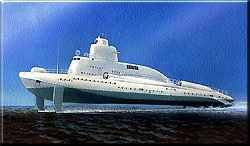 The idea of creating such a unique project was submitted by the First Secretary of the CPSU Central Committee Nikita Khrushchev. During his stay in Sevastopol and the inspection of the naval base, Khrushchev noticed the nearby missile boats and submarines and expressed the idea of creating a submersible submarine fleet when the enemy uses atomic weapons. Just because the First Secretary himself put forward the idea, the project, which was so incompatible in requirements, continued to be worked out hard.
The idea of creating such a unique project was submitted by the First Secretary of the CPSU Central Committee Nikita Khrushchev. During his stay in Sevastopol and the inspection of the naval base, Khrushchev noticed the nearby missile boats and submarines and expressed the idea of creating a submersible submarine fleet when the enemy uses atomic weapons. Just because the First Secretary himself put forward the idea, the project, which was so incompatible in requirements, continued to be worked out hard.The project, which received the number "1231", was commissioned to develop TsKB-19, for the development and construction of prototypes he was transferred to the marine plant of the city of Leningrad. It was this that served to unite TsKB-19 and Leningrad TsKB-5 in the future at Almaz Central Design Bureau.
The development of a unique ship was carried out with great difficulties, it is worth noting that the main development was made by the bureau bureau, which had to study the design of submarines on the move. To bind together a surface ship and a submarine was difficult to do and designers had to show wonders of ingenuity and simplification.
In accordance with the technical assignment received from the naval department of the Soviet Union, the 1231 project was to be used for delivering quick missile strikes against enemy surface vehicles in locations close to the main enemy bases. Rocket ships were supposed to arrive in a predetermined area and be in it in a submerged state and expect the approach of surface forces of the enemy. With a sufficient approach of the enemy, the rocket ships, emerging, went to the distance of the missile strike, after which they left at high speed in a submerged or surface position.

Work on the design of the unusual ship began at the beginning of 1959, and ended with the departure of Nikita Khrushchev from leading political positions in 1964. No one can say for sure right now how the work on the construction of the submerging rocket ship would have ended, if Nikita Khrushchev had not left the post of First Secretary of the Central Committee of the Party.
Key Features:
- surface speed of 38 nodes;
- submarine speed 4 node;
- The crew of the ship 12 people;
- four cruise missiles of the P-25 complex;
- approximate cost in 1960 year - 40 million rubles;
Amphibious transport boat project "717"
By 1962, the American submarine fleet is making a breakthrough in the construction of nuclear submarines. The Soviet Union is trying to urgently catch up and overtake the main competitor in nuclear shipbuilding.
To obtain leadership status, the Soviet Union begins designing large-sized submarines for various purposes. In 1967, the Malakhit design bureau receives a technical assignment from the naval department for designing a submarine to transport troops to 1000 people and a dozen units of armored vehicles to perform combat missions.

KB "Malachite" already had experience in developing large submarines of the project "664" and the project "748".
If the nuclear-powered icebreaker were built, it would become the largest submarine in the whole history. The 18 displacement of thousands of tons, the height of a five-story house, the length equal to 2-m football fields - a real giant of the underwater world was intended for transporting a regiment of marine and various weapons and cargo to predetermined landing areas to capture bridgeheads on the enemy's territory.
In accordance with the project, the submarine hull was made of 2-x cylinders. In the central compartment housed the personnel of the boat and landing units, the number of more than one thousand people. On the sides of the boat in the compartments were located ground mines in the amount of up to 400 units, the arrangement of which, according to calculations, could lock up the entire composition of the US Sixth Fleet in Norfolk. By 1969, the design work on the 717 boat was completed.
But by that time, the Soviet Union urgently needed submarines with ballistic missiles to achieve military parity with the United States, all the forces of the Central Design Bureau and shipyards were abandoned to develop and build nuclear submarines with nuclear weapons. All work on the sea leviathan was suspended and finally stopped at the end.
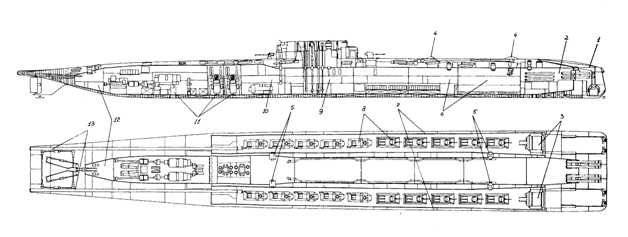
The main characteristics of the project "717":
- the width of the 23 meter;
- immersion depth to 300 meters;
- speed of 18 knots;
- Duration of autonomous navigation 2.5 month;
Armament:
- six torpedo tubes;
- 18 anti-submarine missiles;
- 2 artillery mounts;
Transportation:
- Marine Regiment with 4 BTR-60;
- Marine battalion with 20 armored vehicles.
Project "667M" - the atomic submarine "Andromeda"
At the beginning of 80, the US began to appear atomic submarines with Tomahawk missiles capable of hitting the target at a distance of 2.5 thousands of kilometers. In the Soviet Union, in KB them. Chelomey after urgently develop a complex "Meteorit-M". The cruise missile of the ZM25 complex exceeded the American equivalent of Tomahawk in terms of speed indicators and had a purpose — the destruction of ground targets and enemy targets.
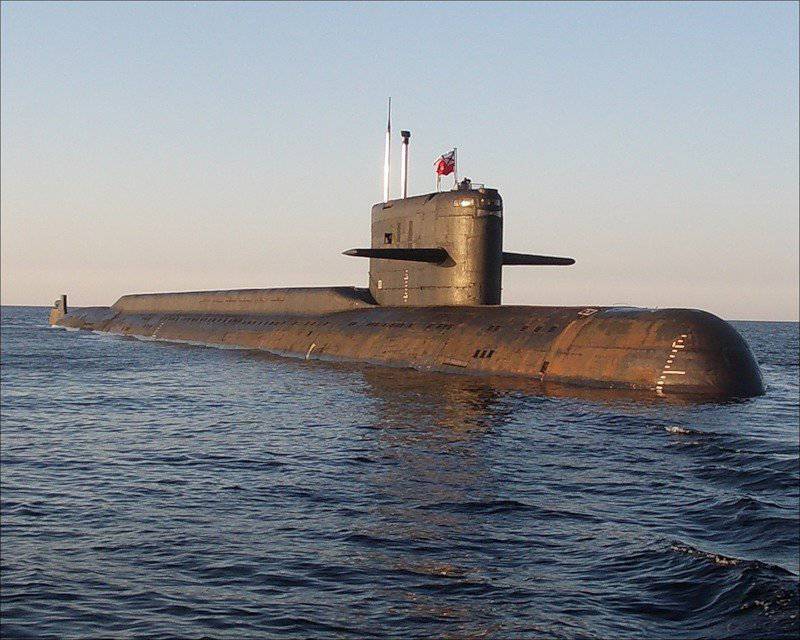
It was precisely under this missile system that the design work began on the refitting of the submarine of the 667A project, which was commissioned by the Soviet Navy at the end of 1970. The works were carried out from 82 to 85 year at the Severodvinsk plant. The missile compartment was completely replaced, the 12 missiles of the Meteorit-M complex were located in the new compartment.
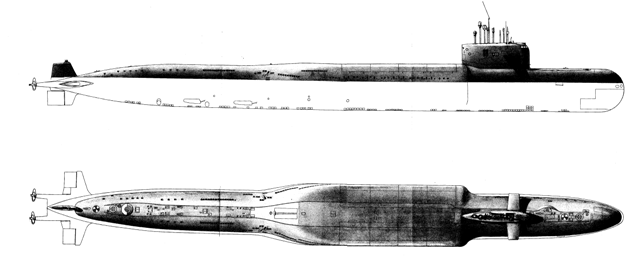
The submarine receives a new designation "667M", the number "K-420", the Americans called it "Yankee-sidecar". At the end of 1983, it is part of the Northern Fleet, and after 30 days, combat tests of the missile complex begin. The rockets not only went straight to the target, but also exceeded all the declared indicators, there were no breakdowns and emergencies.
In 1989, the project is closed after conversion. Missiles shoot, and the submarine is used as a torpedo submarine. In 1993 boat put for long storage.
The main characteristics of "Andromeda":
- displacement 7.7 thousand tons;
- length 130 meters;
- width 12 meters;
- draft 8.7 meter;
- immersion depth 320 meters;
- speed of 27 nodes;
- crew 120 people;
Armament:
- RK "Meteorit-M", 12 missile ammunition;
- TA caliber 533-mm;
- control system of the RK "Andromeda".
Underwater barges and tankers
In 80, the idea of underwater barges and tankers became relevant. In the confrontation between Iraq and Iran, in just 2, about 300 of various oil ships and transports were destroyed.
Western countries and the Soviet Union are forced to protect vehicles, and therefore in the USSR, in the Malakhit design bureau, a nuclear-powered transport submarine project is being implemented.
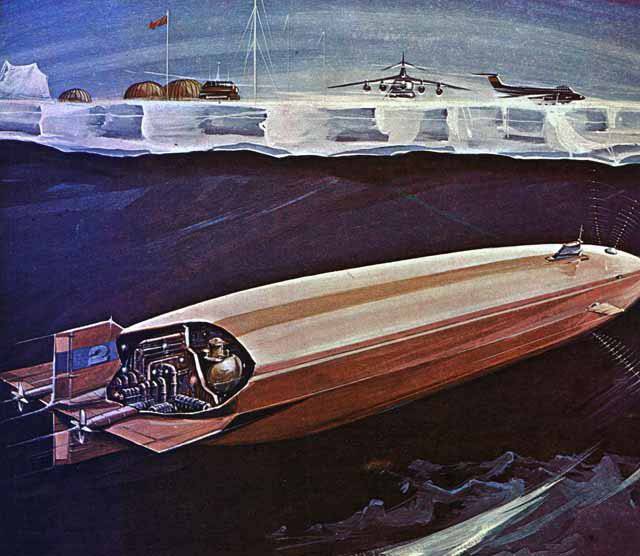
By the beginning of 1990, the projects of tankers and barges with cargo capacity up to 30 thousand tons were fully prepared. But due to the change of the political system, the collapse of the USSR into separate states, the projects of submarine supertransports have not been implemented.
Returning to the idea of submarine heavy trucks began today due to exacerbated cases of sea terrorism.
Underwater vehicles will be able to deliver more cargo at a depth of up to 100 meters at speeds up to 19 nodes. A team of similar transport workers will be about 35 people.
Information